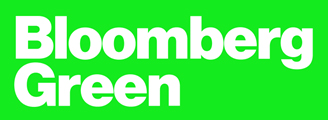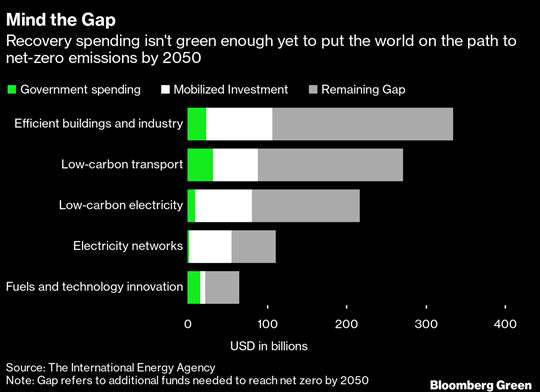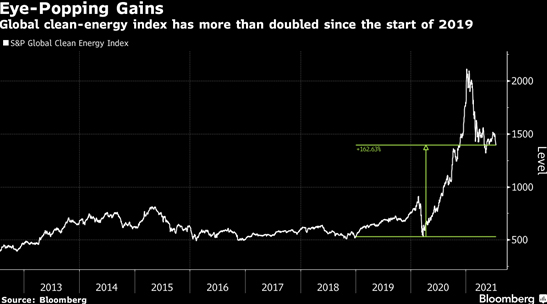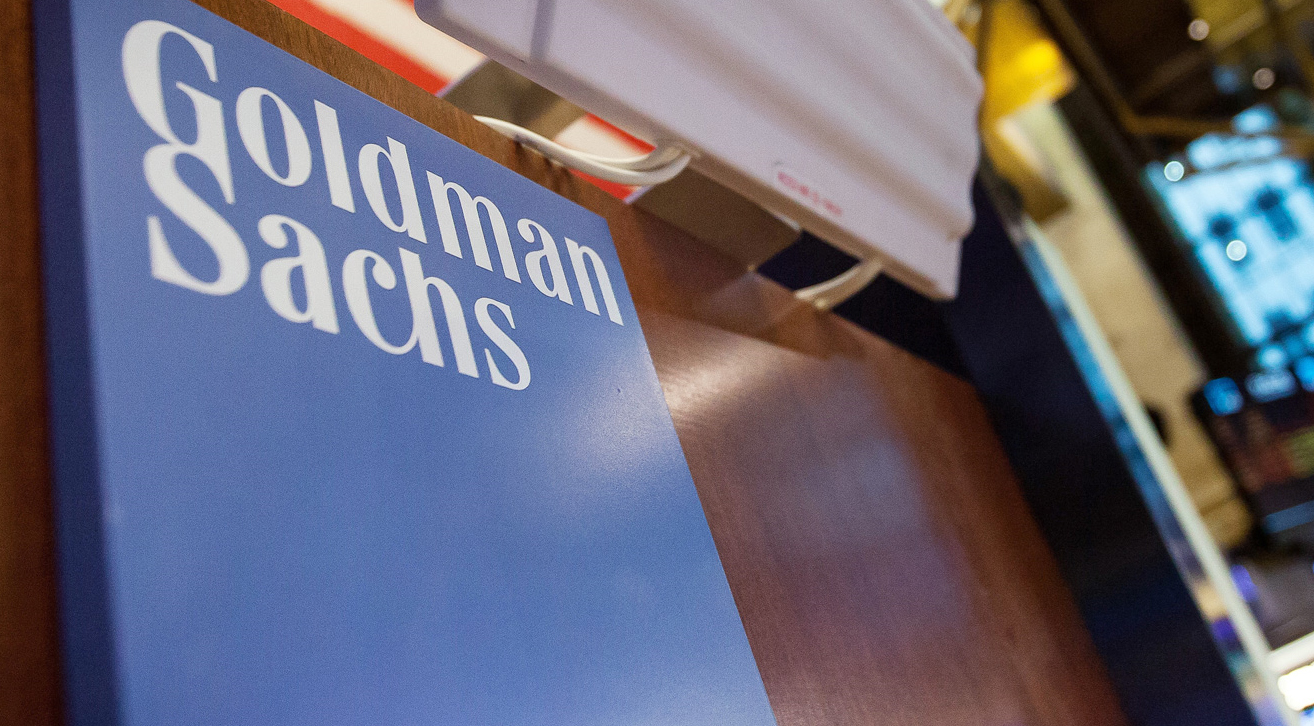|

In climate news today...

Tim Quinson
Good Business
About
40% of food gets wasted from
farm to fork.
For all the lives lost and economic damage done by the coronavirus
pandemic, it’s also managed to hurt efforts to
combat climate change.
Corporate demand for clean electricity is declining for the first time
because more employees are working from home than ever before. This is
most notable for companies in the RE100, which
have all pledged to offset 100% of their electricity
consumption with clean energy.
Ninety-four of the 222 RE100 companies that
have disclosed electricity demand data for both 2019 and
2020 reported drops in their consumption as they adjusted to remote
work environments last year, said Kyle Harrison, a New York-based
corporate energy strategist at Bloomberg New Energy Finance (BNEF).
“The RE100 still presents an incredible clean energy investment
opportunity, but the long-term outlook has
dampened slightly,” Harrison said.
While large energy users
saw significant increases in their electricity consumption,
such as QTS Realty Trust (29%), General Motors (28%), Schneider
Electric (25%) and Vodafone (17%), this wasn’t enough to offset the
declines from other companies, Harrison said. Notable companies that
reported the largest decreases included AstraZeneca (13%), Signify
(23%) and Siemens (36%).

For some, the slide in consumption may be a temporary setback, but for
others, it may take
years to recover as businesses turn to a full or hybrid
remote work environment.
The 222 companies in the RE100 that set 100% clean energy goals will
need to purchase an additional 247 terrawatts (TWh) of clean energy in
2030, BNEF estimates. That’s down from the previous 269TWh forecast
from the research firm in January, and marks the first time the 2030
outlook has dropped.
The largest providers of clean electricity to corporations
are Invenergy LLC, Ignis, Engie SA, NextEra Energy Inc. and Orsted
A/S, according to BNEF. While the outlook for clean electricity
remains bullish for now, the drop in electricity consumption from the
private sector is something developers should keep an eye on, Harrison
said.
The volume of corporate power purchase agreements did increase 86% in
the first half of 2021 from the year-earlier period, as the world
emerged from what had been the worst wave of the pandemic. “While
corporate demand remains a healthy opportunity for clean energy
developers, the
Covid-19 pandemic may still rear its ugly head down the
line,” he said.
Microsoft Corp. announced 35 new power purchase agreements last week
for solar and wind to become the second-largest corporate buyer of
clean energy globally. The deals underpin a broader strategy from
Microsoft to have its hourly electricity consumption
matched with clean energy at all times by 2030, Harrison
said.
The S&P Global Clean Energy Index, which includes NextEra and Orsted,
has advanced 177% since the start of 2019, and that includes this
year’s decline of 21%.

Despite the recent sell-off, green-energy companies Orsted, Neoen SA
and Solaria Energia y Medio Ambiente SA still trade at higher
enterprise value-to-earnings before interest, taxes, depreciation and
amortization (Ebitda) multiples than most integrated utilities (Enel
SpA, Iberdrola SA and Engie SA) and even some tech giants (Alphabet
Inc. and Facebook Inc.), according to Bloomberg Intelligence
analyst Elchin Mammadov.
Huge capacity-growth prospects for wind and solar-power developers and
the ascent of ESG investing may keep “supporting premium valuations of
the green sub-sector after the recent de-rating,” he said.

European
Union targets the end of fossil fuels with
landmark climate proposals.
Bloomberg
Green publishes the ESG-focused newsletter every Wednesday, providing
unique insights on climate-conscious investing.
Green Play Ammonia™, Yielder® NFuel Energy.
Spokane, Washington. 99212
www.exactrix.com
509 995 1879 cell, Pacific.
exactrix@exactrix.com
|